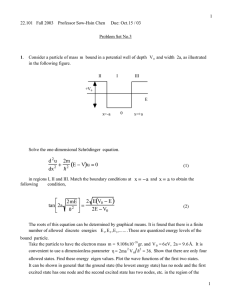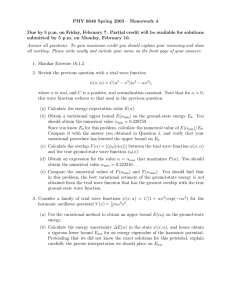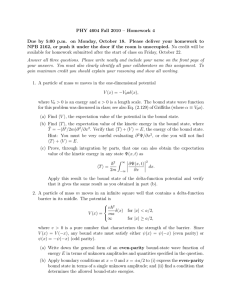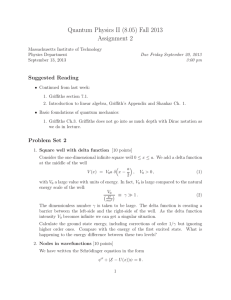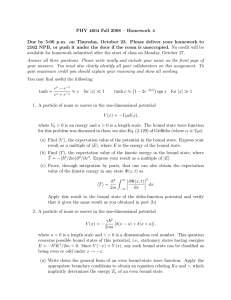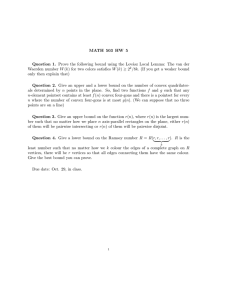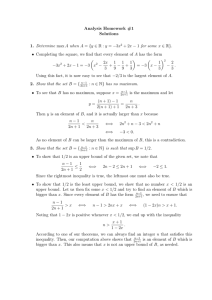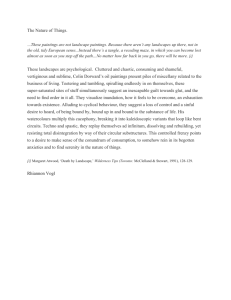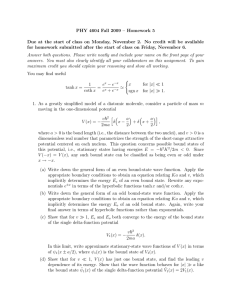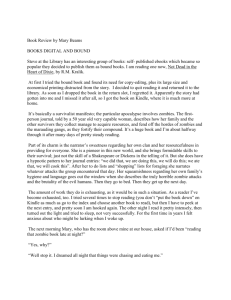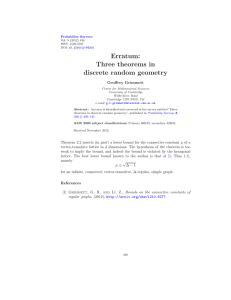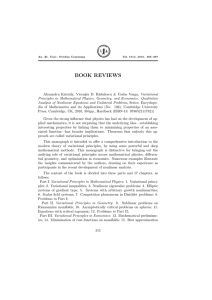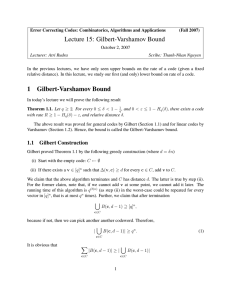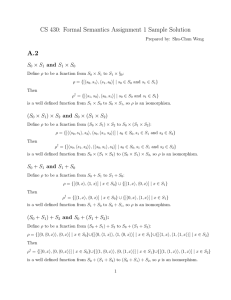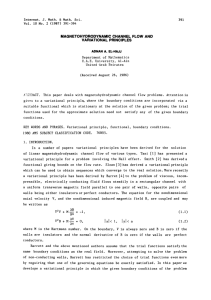PHY 6646 Spring 2002 – Homework 3
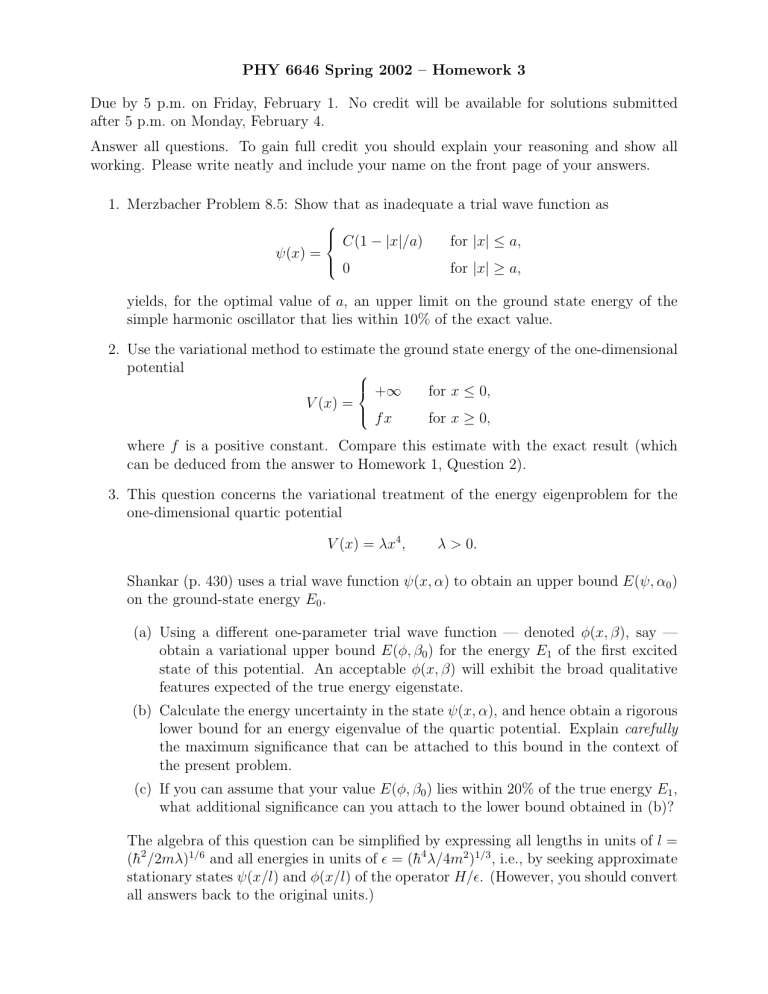
PHY 6646 Spring 2002 – Homework 3
Due by 5 p.m. on Friday, February 1. No credit will be available for solutions submitted after 5 p.m. on Monday, February 4.
Answer all questions. To gain full credit you should explain your reasoning and show all working. Please write neatly and include your name on the front page of your answers.
1. Merzbacher Problem 8.5: Show that as inadequate a trial wave function as
ψ
( x
) =
C
(1
− | x | /a
) for
| x | ≤ a,
0 for
| x | ≥ a, yields, for the optimal value of a
, an upper limit on the ground state energy of the simple harmonic oscillator that lies within 10% of the exact value.
2. Use the variational method to estimate the ground state energy of the one-dimensional potential
V
( x
) =
+
∞ for x ≤
0
, fx for x ≥
0
, where f is a positive constant. Compare this estimate with the exact result (which can be deduced from the answer to Homework 1, Question 2).
3. This question concerns the variational treatment of the energy eigenproblem for the one-dimensional quartic potential
V
( x
) =
λx 4 , λ >
0
.
Shankar (p. 430) uses a trial wave function
ψ
( x, α
) to obtain an upper bound
E
(
ψ , α
0 on the ground-state energy
E
0
.
)
(a) Using a different one-parameter trial wave function — denoted
φ
( x, β
), say — obtain a variational upper bound
E
(
φ, β
0
) for the energy
E
1 of the first excited state of this potential. An acceptable
φ
( x, β
) will exhibit the broad qualitative features expected of the true energy eigenstate.
(b) Calculate the energy uncertainty in the state
ψ
( x, α
), and hence obtain a rigorous lower bound for an energy eigenvalue of the quartic potential. Explain carefully the maximum significance that can be attached to this bound in the context of the present problem.
(c) If you can assume that your value
E
(
φ, β
0
) lies within 20% of the true energy
E
1
, what additional significance can you attach to the lower bound obtained in (b)?
The algebra of this question can be simplified by expressing all lengths in units of l
=
(¯
2 /
2 mλ
)
1 / 6 and all energies in units of = (¯
4 λ/
4 m 2
)
1 / 3
, i.e., by seeking approximate stationary states
ψ
( x/l
) and
φ
( x/l
) of the operator
H/
. (However, you should convert all answers back to the original units.)

